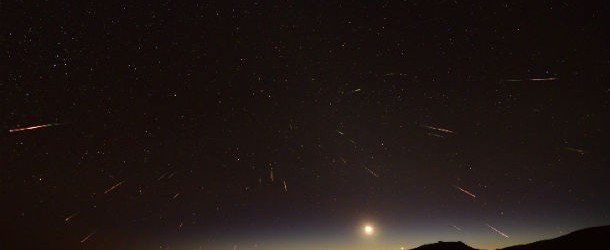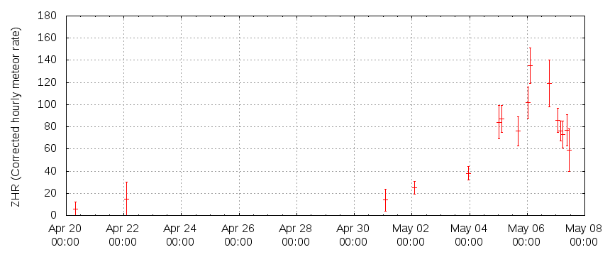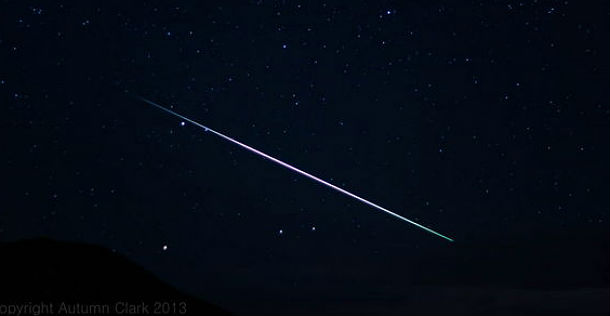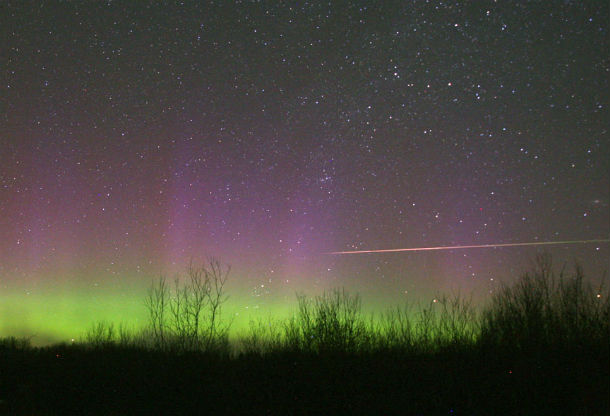2013 Eta Aquarid meteor shower overview

This year’s annual Eta Aquarid meteor shower peaked on May 5/6 as our planet passed through a stream of debris from Halley’s Comet. International Meteor Organization (IMO) reported peak of 135 meteors per hour on May 6, 2013. Far more than initially forecasted, 25 – 30 per hour.

ZHR activity report graph (Credit: Geert Barentsen/IMO)
The waning crescent moon interfered on the weekend of May 4/5, but next week thinning moon will be more favorable. The radiant is situated approximately sixty degrees west of the sun and it rises before the sun in the morning hours, so for most observers, the Eta Aquarids are only visible during the last couple hours before the start of morning twilight. It is also interesting to look for the Antihelion meteors and for members of the Eta Lyrids, both are weakly active during the Eta Aquarids.

The peak of the meteor shower is behind us but the show is not over, as Earth is still passing through the outskirts of Halley’s debris stream. The Eta Aquarids are active between April 29 and May 20. A decreasing drizzle of dozen meteors per hour should be created by flakes of comet dust impacting our planet’s upper atmosphere at 66 km/s (150,000 mph) for several days to come. The Eta Aquarid meteors are the second fastest of any annual meteor shower. They travel at speeds of up to a blazing 238,000 km/h (148,000 mph). Only the Leonids of November hit our atmosphere faster.


Eta Aquarid meteor taken in San Diego County, US on May 5, 2013 (Credit: Autumn Clark)


A bright Eta Aquarid streaks across the northern sky and aurora on May 6, 2013 (Credit: Bob King)
The Eta Aquarids are particles from Halley’s Comet, which last passed through the inner solar system in 1986. The meteors we currently see as members of the Eta Aquarid shower separated from Halley’s Comet hundreds of years ago.
The next major shower peak will be on July 27/28, 2013 with Delta Aquarids on the July 27 – 28 overnight, with 58% of full Moon.
Sources: International Meteor Organization (IMO), SpaceDex, Space.com
Featured image: The annual Eta Aquarids meteor shower, captured from the entrance to Otago Harbour on New Zealands South Island on May 7, 2013. (Credit: Stephen Voss via SpaceWeather.com)

Down south in South Africa we had a great show on the 6th. I counted 58 in 40 minutes